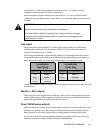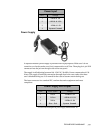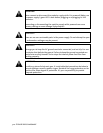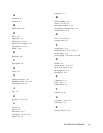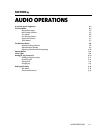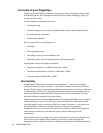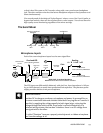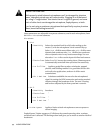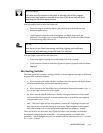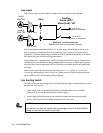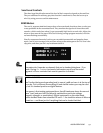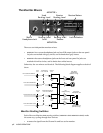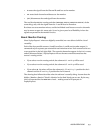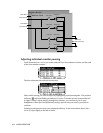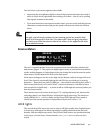
4-4 AUDIO OPERATIONS
w
BEWARE THE PHANTOM!
While properly-wired balanced microphones can’t be damaged by phantom
power, improperly-wired ones will cause trouble. Plugging in an unbalanced
mic, using a “cough button” that shorts the mic’s signal to ground, and some
kinds of cable shorts can damage the microphone, ZephyrExpress, or both.
If you’re not using a condenser microphone that specifically requires phantom
power, leave that setting turned off.
Input parameters are adjustable in separate submenus, one for each microphone, from
the Audio: Microphones submenu:
Microphones
— Mic 1
— Sensitivity Selects the nominal level for a full scale reading on the
meters (?) with the microphone’s level control fully up.
Select high +60dB for most ribbon mics, mid +45dB for most
dynamic and condenser mics, low+30dB for hot condenser
mics or dynamic mics in very loud surroundings. You can
also select line+1dB to use the input with line-level sources.
— Phantom Power Select On or Off, but see the warning above. Phantom power
is automatically turned off when you select line sensitivity.
— Low Cut Filter Applies a gentle filter to reduce wind noise, popped
plosives, and building rumble. It’s a good idea to leave this
on for all voice applications, and turn it off for music
transmissions.
— Mic 1 test tone Substitutes an 860Hz sine wave for the microphone’s
signal, for testing the ISDN connection and setting nominal
volumes through the broadcast chain. The tone’s routing
and level are adjusted by the front-panel MIC 1 controls.
— Mic 2
— Sensitivity See above
— Phantom Power "
— Low Cut Filter "
— Mic 2 test tone "
— Limiter bypass Applies a limiter to both microphones at once to preserve
stereo imaging.
ZephyrExpress’ limiter engages at 15 dB above the normal operating value, so minor
overloads aren’t affected. The limiting action itself gives you as much as another 20 dB of
headroom.



